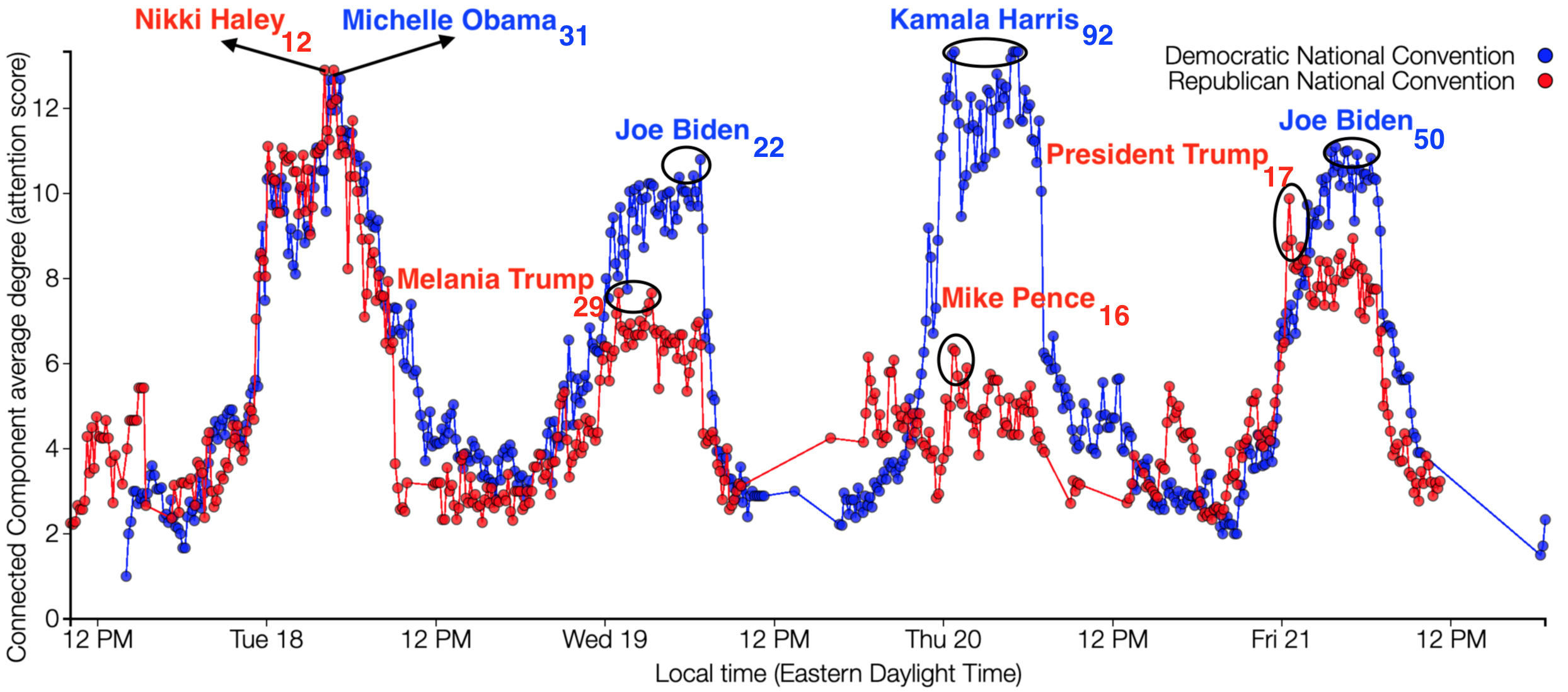The political landscape in the United States is often shaped by the ratings of major events such as the Democratic National Committee (DNC) and the Republican National Committee (RNC) conventions. These ratings not only reflect the popularity of the parties but also indicate public interest and engagement in the electoral process. Understanding the dynamics of DNC vs RNC ratings is crucial for political analysts, campaign strategists, and voters alike.
In this article, we will dive deep into the ratings of the DNC and RNC, exploring the factors that influence these numbers and what they mean for the future of American politics. We will analyze historical data, present-day implications, and expert opinions to provide a well-rounded view of this important subject.
As we progress through the article, we will use data and statistics to support our findings, ensuring that our analysis is grounded in credible information. Whether you are a political enthusiast, a student, or just someone looking to understand the electoral process better, this article will equip you with valuable insights.
Table of Contents
- Historical Overview of DNC and RNC Ratings
- Factors Influencing DNC and RNC Ratings
- 2020 DNC vs RNC Ratings: A Comparative Study
- Current Trends in DNC and RNC Ratings
- Public Opinion and Its Impact on Ratings
- Expert Analysis on Future Ratings
- Strategic Implications for Political Campaigns
- Conclusion and Future Outlook
Historical Overview of DNC and RNC Ratings
The ratings of the DNC and RNC have varied significantly over the years. Historically, the conventions have served as a platform for parties to showcase their candidates, policies, and unity.
Key Historical Moments
- 1960: The first televised DNC convention, which significantly boosted viewership.
- 1980: RNC convention ratings peaked during a highly competitive election year.
- 2008: The DNC saw a surge in ratings due to the historic candidacy of Barack Obama.
- 2016: RNC ratings were affected by the controversial nature of Donald Trump's nomination.
Factors Influencing DNC and RNC Ratings
Several factors contribute to the ratings of the DNC and RNC conventions. These include the candidates' popularity, current political climate, and media coverage.
Candidate Popularity
The charisma and public perception of the candidates play a pivotal role in driving ratings. High-profile candidates often attract larger audiences.
Media Coverage
Extensive media coverage can significantly boost ratings. The way media portrays the conventions influences public interest.
2020 DNC vs RNC Ratings: A Comparative Study
The ratings during the 2020 conventions were unprecedented, primarily due to the COVID-19 pandemic, which shifted many events online.
Rating Statistics
- DNC Ratings: Approximately 19.6 million viewers across various platforms.
- RNC Ratings: Around 18.7 million viewers, marking a decline from previous years.
Current Trends in DNC and RNC Ratings
As of 2023, the ratings for both conventions have shown some fluctuations. The ongoing political polarization in the country has influenced viewership numbers.
Shifts in Viewership
- Increased online viewership compared to traditional television.
- Demographics of viewers shifting, with younger audiences preferring online platforms.
Public Opinion and Its Impact on Ratings
Public sentiment towards political parties can dramatically affect ratings. Polling data shows how public opinion shapes the perception of both conventions.
Polling Data Insights
Recent polls indicate that a majority of Americans are dissatisfied with the current political landscape, which may impact ratings for future conventions.
Expert Analysis on Future Ratings
Political analysts provide valuable insights into how future DNC and RNC ratings may evolve. Factors such as technological advancements and changing media consumption habits will play a significant role.
Predictions for Upcoming Elections
- Increased emphasis on digital engagement.
- Potential for hybrid conventions blending online and in-person elements.
Strategic Implications for Political Campaigns
Understanding DNC vs RNC ratings is crucial for political campaigns. The data can inform strategies for outreach, messaging, and overall campaign direction.
Campaign Strategies Based on Ratings
- Targeted advertising based on viewership demographics.
- Utilizing social media platforms to engage younger voters.
Conclusion and Future Outlook
In conclusion, the ratings of the DNC and RNC serve as critical indicators of public interest and engagement in the political process. As we have explored, various factors influence these ratings, from candidate popularity to media coverage.
As the political landscape continues to evolve, it is essential for voters and political strategists to stay informed about these trends. We encourage readers to share their thoughts in the comments section below and look forward to future discussions on this topic.
For those interested in deepening their understanding of political ratings, we invite you to explore other articles on our site that delve into related topics.




